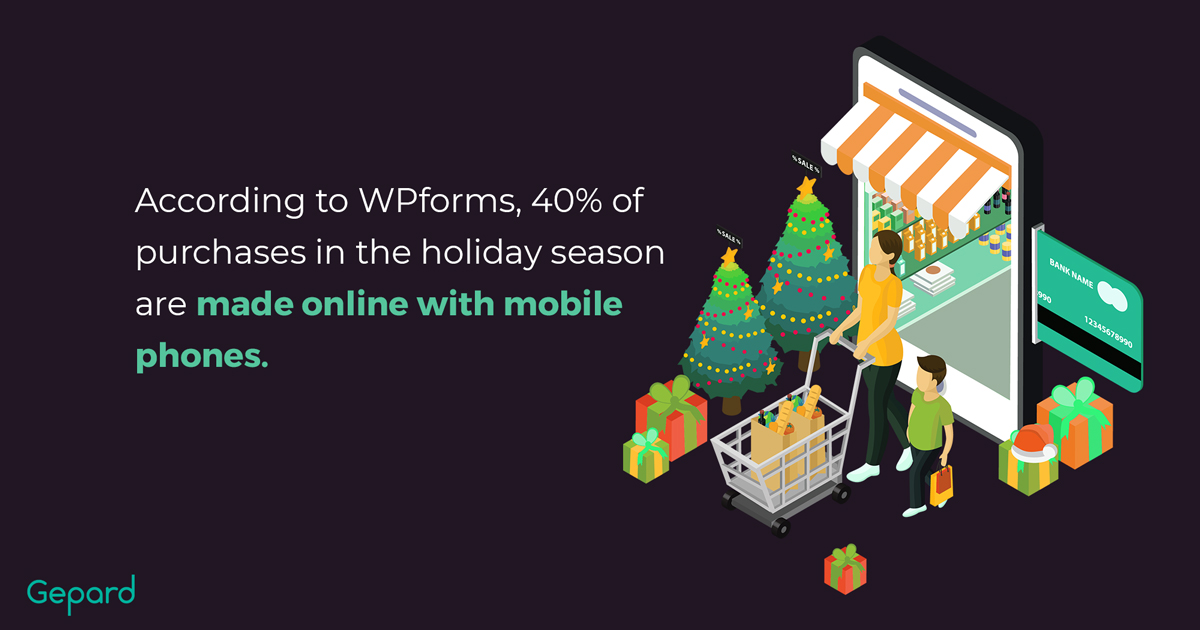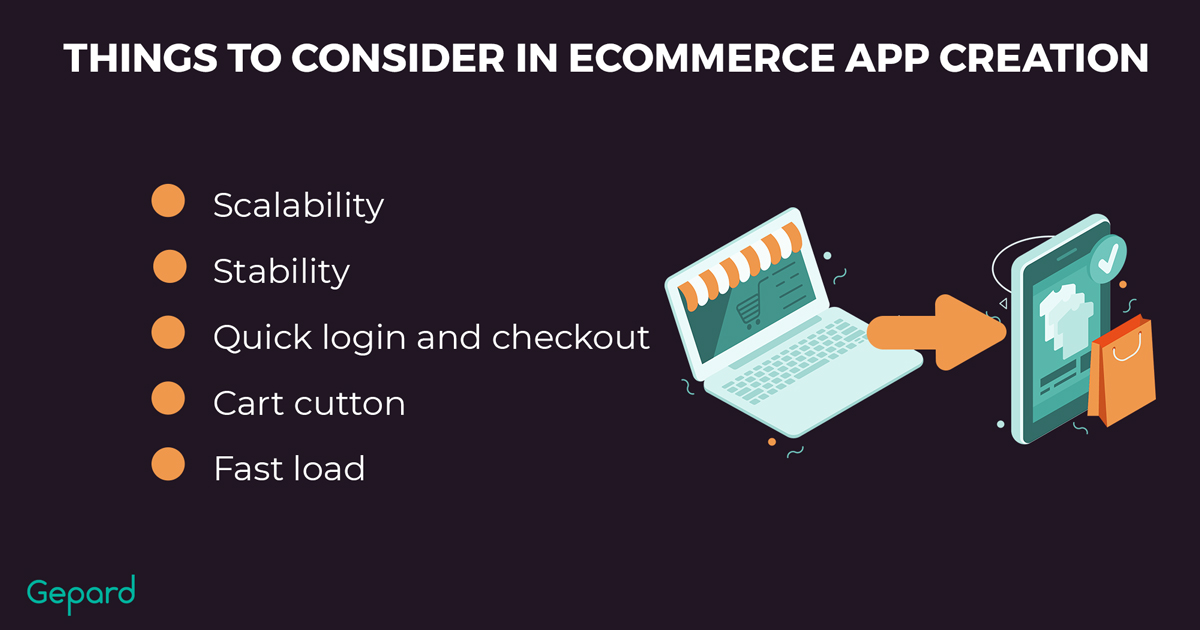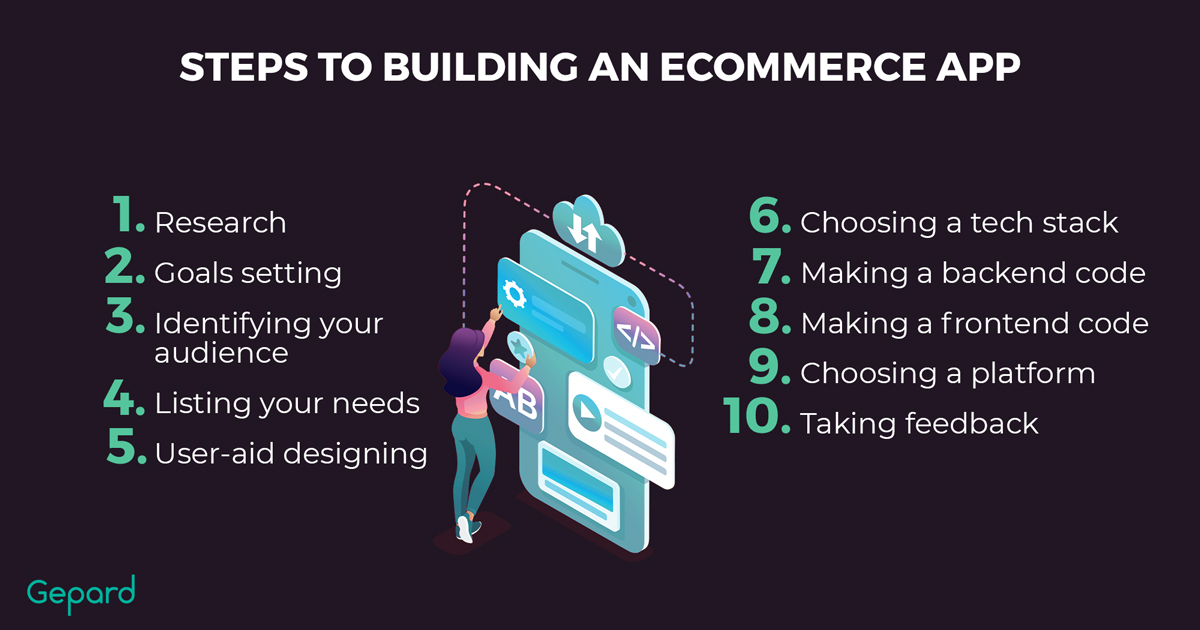How To Make An eCommerce App To Promote Your Online Business In 2022?
Do you want to make an eCommerce app that increases your brand visibility and traffic? It could be an effective idea to promote your business. In the United States, mobile commerce represents 31% of retail eCommerce sales. By looking at the stats, are you ready to have an app? The explosive growth of the B2B eCommerce marketplace has required it to move its focus online.
Thus, the B2B market is now developing and enhancing apps and websites. But the competition is intense. Data shared that 52% of B2B buyers are frustrated with the online shopping experience if this is not catered to their needs. Therefore, the B2B eCommerce marketplace needs to move to develop apps for a seamless experience.
Surprisingly, the rate of mobile phone users is comparatively high and is only growing. The graph of mobile app development and apps in the store is growing. But, the development of a mobile app can be a daunting process. The following blog can help you make an eCommerce application to promote your business.
What Is An eCommerce App?
Google will show you how to make an app like Uber if you search online. A hundred results come on search engines. Similarly, the eCommerce industry is also growing. This transformation has taken place due to globalization and tech development. According to WPforms, 40% of purchases in the holiday season are made online with mobile phones.

Things To Consider In Making An eCommerce App
In the process of mobile app development, there are integral points that need to be taken care of. It does not matter, whether you are building an app on how to create a Wikipedia page for your company or any other eCommerce app.
- Scalability
Scalability is important for an app to handle its users and growth. For your app’s development and growth, you need to take into consideration this factor. It can help in designing the architecture of an application.
- Stability
A lagging app cannot be a good idea. So, keep the app updated to manage its stability. You can run a QA test, feedback, fix updates, and make iterations.
- A Quick Login And Checkout
Users don’t want to spend their time logging in every time. It can disengage them quickly. Make sure to add a quick login and log out. The idea is to use AI facets for it.
- A Cart Button
Since people will buy products from you, make a prominent cart button. The Add to Cart or Buy Now button should be at a position where it is visible. So, people can add products without going to the cart page. Make it a priority for a smooth shopping experience and improve sales.
- A Fast Load
A delayed and long loading wait can lose you, and customers instantly. Make sure the app loads fast and takes as long as 4 to 5 seconds. Use a mitigate button to let the customers know about waiting.

Steps To Build An App For eCommerce Business
Step: 1. Research
You need to start the development of your eCommerce app by doing research. Even to create an app like TikTok, there was a research process. The research helps in finding information and in shaping a product for you. After research and analysis, you will know at what point the market is standing and where you need to target the audience.
Step: 2. Mark Your Goals
Your KPI and goals of the application can directly affect the features and development. Before embarking on the journey, you need to know where your eCommerce store is. To enhance the credibility and traffic of your app, you need to work on upgrading your app features. Ask yourself some questions and make them your goals. Identify what you need and how you are going to achieve it.
Step: 3. Identify Your Audience
Once you have outlined your goals, get on identifying your audience. You must know who you are catering to. If you know your audience you can easily target them, streamline your app and design a winning marketing strategy.
Step: 4. List Your Needs
Now, moving on to the next is to have features. The necessary as well, as the outstanding features. Users are more intrigued to use apps that have easy navigation and advanced qualities such as AI-enabled features. You need to give them as many enhanced features as you can. Some of the most necessary ones for an eCommerce app are:
● A login option, preferably a login feature with social media accounts.
● An app that can be synchronized with your website. If you are into mobile app development you must know its importance.
● A separate category and sub-category for each product.
● Push notifications for alerts and updates about new products, sales, and discounts.
● Multiple payment methods for alternative payments on your app.
● Rating and reviews, to know which products your customers are liking and disliking.
● A Wishlist is a key feature to allows users to save products that they wish to have or are waiting for.
At this point, you might work with loads of product information, and in order not to be buried under hundreds of product data spreadsheets, it can be very helpful to automate your data-related processes with the help of Product Information Management solution such as Gepard PIM.

Step: 5. Make User-Aid Designs
Do you want to make a successful eCommerce application? Well, you need to incorporate user aid designs. The designs are easy to navigate and use. This kind of feature can be a winning point for your app. Make a simple feature that works seamlessly. Use a smooth structure with a simple cart, search, and log-out menu.
Step: 6. Choose A Tech Stack
You need to choose an operating system as a basic step, now there are four major operating systems. Android, Windows, Linux, and macOS. Additionally, there are many other technologies required to make an app.
| Databases | MySQL, MongoDB, dynamo, Firebase, PostSQL |
| Storage | Amazon (AWS S3), Firebase Storage |
| Programming languages | Python, Ruby, PHP, Scala |
| Web Server | Apace, Nginx |
Step: 7. Make A Backend Code (server-facing)
After the tech stack, there is a backend which is a step to run the app. The entire functioning of your application depends on the backend. Back-end data is supposed to look after APIs, collecting and fetching data. Apart from this, they manage orders, register users, manage payments and scale online stores. To run an impeccable backend, BaaS can automate tasks and provide several benefits.
Step: 8. Make A Frontend Code (client-facing)
What the customers will see has the most important effect, thus, frontend development needs to be up to the mark. The app has to be intuitive and catch the eye. For a good experience, UI and UX designs are a chance to make it big.
Step: 9. Choose A Platform
Till now, a lot of things are clear. It is time to choose a platform; the app type. The experts typically consider a Native or a Progressive Web App. PWA app works better and is similar to a Native app, and is an excellent idea for mobile traffic, if you have an extensive budget.
Step: 10. Take Feedback
After testing, and finalizing everything, take feedback to have a better understanding of your app performance. Taking feedback allows you to improve your work and increase the regularity of an app. Take feedback often to increase productivity.
After running SEO optimization, and promoting your app, it is time to launch it. Kick it off on different platforms such as Google Play Store, and Apple Store.
Conclusion
To summarize everything, making an eCommerce app has several benefits, as its industry is growing at a whooping speed. Creating a mobile application can be the next big step to promoting your eCommerce business.





